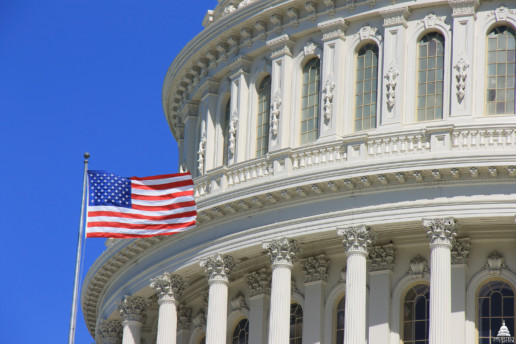IRS may have big ACA employer tax woes, advocate says
IRS may play a big part in your company's ACA tax filing. Checkout this article from Benefits Pro about what the IRS will be looking for in companies ACA filings this year by Allison Bell
An official who serves as a voice for taxpayers at the Internal Revenue Service says the IRS may be poorly prepared to handle the wave of employer health coverage offer reports now flooding in.
The Affordable Care Act requires "applicable large employers" to use Form 1095-C to tell their workers, former workers and the IRS what, if any, major medical coverage the workers and former workers received. Most employers started filing the forms in early 2016, for the 2015 coverage year.
This year, the IRS is supposed to start imposing penalties on some employers who failed to offer what the government classifies as solid coverage to enough workers.
If Donald Trump's promise holds true, the Affordable Care Act could be on its way out. Along with it may...
Nina Olson, the national taxpayer advocate, says the IRS was not equipped to test the accuracy of ACA health coverage information reporting data before the 2016 filing season, for the 2015 coverage year. The IRS expected to receive just 77 million 1095-C forms for 2015, but it has actually received 104 million 1095-C's, and it has rejected 5.4 percent of the forms, Olson reports.
"Reasons for rejected returns include faulty transmission validation, missing (or multiple) attachments, error reading the file, or duplicate files," Olson says.
Meanwhile, the IRS has had to develop a training program for the IRS employees working on employer-related ACA issues on the fly, and it was hoping in November to provide the training this month, Olson says.
"The training materials are currently under development," Olson says. She says her office did not have a chance to see how complete the training materials are, or how well they protect taxpayer reports.
Olson discusses those concerns about IRS efforts to administer ACA tax provisions and many other tax administration concerns in a new report on IRS performance. The Taxpayer Advocate Service prepares the reports every year, to tell Congress how the IRS is doing at meeting taxpayers' needs.
In the same report, Olson talks about other ACA-related problems, such as headaches for ACA exchange plan premium tax credit subsidy users who are also Social Security Disability Insurance program users, and she gives general ACA tax provision administration data.
APTC subsidy
The ACA premium tax credit subsidy program helps low-income and moderate-income exchange plan users pay for their coverage.
Exchange plan buyers who qualify can get the tax credit the ordinary way, by applying for it when they file their income tax returns for the previous year. But about 94 percent of tax credit users receive the subsidy in the form of an "advanced premium tax credit."
When an exchange plan user gets an APTC subsidy, the IRS sends the subsidy money to the health coverage issuer while the coverage year is still under way, to help cut how much cash the user actually has to pay for coverage.
When an APTC user files a tax return for a coverage year, in the spring after the end of the coverage year, the user is supposed to figure out whether the IRS provided too little or too much APTC help. The IRS is supposed to send cash to consumers who got too little help. If an APTC user got too much help, the IRS can take some or all of the extra help out of the user's tax refund.
Another ACA provision, the "individual shared responsibility" provision, or individual coverage mandate provision, requires many people to obtain what the government classifies as solid major medical coverage or else pay a penalty.
Individual taxpayers first began filing ACA-related tax forms in early 2015, for the 2014 coverage year. Early last year, individual taxpayers filed ACA-related forms for the second time, for the 2015 coverage year.
Only 6.1 million taxpayers told the IRS they owed individual mandate penalty payments for 2015, down from 7.6 million who owed the penalty for 2014.
But, in part because the ACA designed the mandate penalty to get bigger each year for the first few years, the average penalty payment owed increased to $452 for 2015, from $204 for 2014.
The number of households claiming some kind of exemption from the penalty program increased to 8.6 million, from 8.4 million.
The number of filers who said they had received APTC help increased to 5.3 million for 2015, up from 3.1 million for 2014. And the amount of APTC help reported increased to $18.9 billion for 2015, from $11.3 billion in APTC subsidy help for 2014.
That means the 2015 recipients were averaging about $3,566 in reported subsidy help in 2015, down from $3,645 in reported help for 2014.
Olson says her office helped 10,910 taxpayers with ACA premium tax credit issues in the 12-month period ending Sept. 30, 2016, up from 3,318 in the previous 12-month period.
One of her concerns is how the Social Security Disability Insurance program, which is supposed to serve people with severe disabilities, interacts with the ACA provision that requires people who guess wrong about their income during the coverage year to pay back excess APTC subsidy help.
SSDI lump-sum payment headaches
Some Social Security Disability Insurance recipients have to fight with the Social Security Administration for years to qualify for benefits. Once the SSDI recipients win their fights to get benefits, the SSA may pay them all of the back benefits owed in one big lump sum.
The big, lump-sum disability benefits payments may increase the SSDI recipients' income for a previous year so much they end up earning too much for that year to qualify for ACA premium tax credit help, Olson says in the new report.
The SSDI recipients may then have to pay all of the ACA premium tax credit help they received back to the IRS, Olson says.
So far, IRS lawyers have not figured out any law they can use to protect the SSDI recipients from having to pay large amounts of premium tax credit help back to the government, Olson says.
For now, she says, her office is just trying to work on a project to warn consumers about how accepting any lump-sum payment, including an SSDI lump-sum benefits payment, might lead to premium tax credit headaches.
See the original article Here.
Source:
Bell A. (2017 January 16). IRS may have big ACA employer tax woes, advocate says [Web blog post]. Retrieved from address https://www.benefitspro.com/2017/01/16/irs-may-have-big-aca-employer-tax-woes-advocate-sa?page_all=1
HSAs could play bigger role in retirement planning
Did you know that ACA repeal could have and effect on health savings plans (HRA)? Read this interesting article from Benefits Pro about how the repeal of the ACA might affect your HRAs by Marlene Y. Satter
With the repeal of the Affordable Care Act looming, one surprising factor in paying for health care could see its star rise higher on the horizon—the retirement planning horizon, that is. That’s the Health Savings Account—and it’s likely to become more prominent depending on what replaces the ACA.
HSAs occupy a larger role in some of the proposed replacements to the ACA put forth by Republican legislators, and with that greater exposure comes a greater likelihood that more people will rely on them more heavily to get them through other changes.
For one thing, they’ll need to boost their savings in HSAs just to pay the higher deductibles and uncovered expenses that are likely to accompany the ACA repeal.
But for another—and here’s where it gets interesting—they’ll probably become a larger part of retirement planning, since they provide a number of benefits already that could help boost retirement savings.
Contributions are already deductible from gross income, but under at least one of the proposals to replace the ACA, contributions could come with refundable tax credits—a nice perk.
Another proposal would allow HSA funds to pay for premiums on proposed new state health exchanges without a tax penalty for doing so—also beneficial. And a third would expand eligibility to have HSAs, which would be helpful.
But whether these and other possible enhancements to HSAs come to pass, there are already plenty of reasons to consider bolstering HSA savings for retirement. As workers try to navigate their way through the uncertainty that lies ahead, they’ll probably rely even more on the features these plans already offer—such as the ability to leave funds in the account (if not needed for higher medical expenses) to roll over from year to year and to grow for the future, and the fact that interest on HSA money is tax free.
But possibly the biggest benefit to an HSA for retirement is the fact that funds invested in one grow tax free as well. If you can leave the money there long enough, you can grow a sizeable nest egg against potential future health expenses or even the purchase of a long-term care policy. And, at age 65, you’re no longer penalized if you withdraw funds for nonapproved medical expenses.
And if you don’t use the money for medical expenses in retirement, but are past 65, you can use it for living expenses to supplement your 401(k). In that case, you’ll have to pay taxes on it, but there’s no penalty—it just works much like a tax-deferred situation from a regular retirement account.
See the original article Here.
Source:
Satter M. (2017 January 16). HSAs could play bigger role in retirement planning [Web blog post]. Retrieved from address https://www.benefitspro.com/2017/01/16/hsas-could-play-bigger-role-in-retirement-planning?ref=hp-news
Get Health Insurance Through Your Employer? ACA Repeal Will Affect You, Too
Great article from Health Affairs about the effects of ACA repeal on employer healthcare by JoAnn Volk
Much of the recent attention on the future of the Affordable Care Act (ACA) has focused on the fate of the 22.5 million people likely to lose insurance through a repeal of Medicaid expansion and the loss of protections and subsidies in the individual insurance market. Overlooked in the declarations of who stands to lose under plans to “repeal and replace” the ACA are those enrolled in employer-sponsored health plans — the primary source of coverage for people under 65.
Job-based plans offered to employees and their families cover 150 million people in the United States. If the ACA is repealed, they stand to lose critical consumer protections that many have come to expect of their employer plan.
It’s easy to understand the focus on the individuals who gained access to coverage thanks to the health reform law. ACA drafters targeted most of the law’s insurance reforms at the individual and small-group markets, where consumers and employers had the greatest difficulty finding affordable, adequate coverage prior to health reform. The ACA’s market reforms made coverage available to those individuals with pre-existing conditions who couldn’t obtain coverage in the pre-ACA world, and more affordable for those low- and moderate-income families who couldn’t afford coverage on their own.
Less noticed, but no less important, the ACA also brought critical new protections to people in large employer plans. Although most large employer plans were relatively comprehensive and affordable before the ACA, some plans offered only skimpy coverage or had other barriers to accessing care, leaving individuals—particularly those with costly, chronic health conditions—with big bills and uncovered medical care. For that reason, the ACA extended several meaningful protections to employees of large businesses.
Preventive Services Without Cost-Sharing
The ACA requires all new health plans, including those sponsored by employers, to cover recommended preventive services without cost-sharing, bringing new benefits to 71 million Americans. That means individuals can get the screenings, immunizations, and annual check-ups that can catch illness early or prevent it altogether without worrying about meeting a costly deductible or co-payment. With that peace of mind, it’s no wonder it’s one of the most popular provisions of the ACA. Women employees can also access affordable contraception, making available a wider variety of contraceptive choices and increasing use of long-term contraceptive methods.
Pre-Existing Condition Exclusions
Under the ACA, employers cannot impose a waiting period for coverage of a pre-existing condition. Prior to the ACA, individuals who became eligible for an employer plan—for example, once hired for a new job—might have to wait up to 12 months for the plan to cover pre-existing health conditions. You could “buy down” that waiting period with months of coverage under another plan, so long as it was the right kind of plan and you didn’t go without coverage for 63 days or more. But if you lost your job, couldn’t afford COBRA, went a few months without coverage and then were lucky enough to get another job with benefits, you might find the care you needed wasn’t covered under your plan for an entire year.
Dependent Coverage To Age 26
The ACA requires all health plans, including those sponsored by large employers, to cover dependents up to age 26. Prior to the ACA, one of the fastest growing groups of uninsured was young adults — not because they turned down coverage offered to them, but because they were less likely to have access to employer-based plans or other coverage. The result has been a dramatic increase in the number of insured young adults, particularly among those with employer-sponsored coverage. This ACA requirement is one provision President-elect Trump and many anti-ACA legislators have pledged to retain.
Annual Out-Of-Pocket Limit
The ACA requires all new health plans, including those sponsored by employers, to cap the amount individuals can be expected to pay out-of-pocket each year. Prior to the ACA, even those with the security of coverage on the job couldn’t count on protection from crippling out-of-pocket costs.
Prohibition On Annual And Lifetime Limits
The ACA prohibits employer plans from having an annual or lifetime dollar limit on benefits. Prior to the ACA, employer plans often included a cap on benefits; when employees hit the cap, the coverage cut off. For individuals who needed costly care, like a baby born prematurely or those with hemophilia or multiple sclerosis, that often meant a desperate scramble to find new coverage options as one after another benefit limit was reached.
External Review
The ACA guarantees individuals the right to an independent review of a health plan’s decision to deny benefits or payment for services, regardless of whether the employer plan is insured or self-funded. Prior to the ACA, only workers in insured plans had the right to an independent review of a denied claim. But more than 60 percent of workers are in self-funded plans, and the only option for those workers to hold their plan accountable was to sue, an expensive and lengthy process.
If you’re one of the 150 million people who get their coverage through an employer plan, you may want to pay attention to the prognostications of what’s to become of the ACA. Your access to high-quality, affordable health care will depend on the outcome.
See the original article Here.
Source:
Volk J. (20174 January 11). Get health insurance through your employer? ACA repeal will affect you, too [Web blog post]. Retrieved from address https://healthaffairs.org/blog/2017/01/11/get-health-insurance-through-your-employer-aca-repeal-will-affect-you-too/
Feds pump out even more Obamacare instructions
Have you heard about the recent changes coming to the ACA? If not take a look at this great article from HR Morning about the recent changes that will be going into effect for the ACA by Jared Bilski
If you believe Republicans on Capitol Hill, the Affordable Care Act (ACA) isn’t long for this world. Still, the Obama administration continues to clarify how businesses are supposed to comply with the law’s many provisions.
The Department of Labor (DOL), Department of Health and Human Services (HHS) and the Internal Revenue Service (IRS) just put their heads together for the 35th time to address questions surrounding Obamacare reforms.
Here’s some of the most useful info to come out of this latest FAQ:
Qualified small employer HRA
As HR Morning reported previously, the 21st Century Cures Act, among other things, allows certain small employers to offer a general purpose stand-alone health reimbursement arrangement (HRA) without violating the ACA. It is also referred to as a “qualified small employer health reimbursement arrangement” — or QSEHRA.
The FAQ touches on how this new law jibes with the ACA and clarified that in order to be a QSEHRA, the structure of the plan must:
- be funded entirely by an eligible employer — one with fewer than 50 full-time equivalent employees in the prior year and that doesn’t offer a group health plan to any of its employees
- provide payment to, or reimbursement of, an eligible employee for medical care under Code section 213(d)
- not reimburse more than $4,950 for eligible expenses for individuals or $10,000 for families, and
- be provided to all eligible employees of the employer offering the HRA.
One thing the 21st Century Cures Act (and the feds’ FAQ) doesn’t address: Whether the Employee Retirement Income Security Act (ERISA) applies to a QSEHRA.
Special Enrollment & HIPAA
The FAQ also addressed special enrollment for group health plans under the Health Insurance Portability and Accountability Act (HIPAA). Because HIPAA generally allows current employees and dependents to enroll in a company’s group health plan if the employees/dependents lose their previous coverage, they must be offered the same special enrollment option if they lose individual market coverage (i.e., health coverage they obtained through the individual Obamacare marketplace — or “exchanges”).
This could happen to individual market participants if an insurer that was covering an employee/dependent decides to stop offering that individual market coverage. As we saw last year, several major insurers have taken that step.
One exception to this special enrollment: If the loss of coverage is due to a failure to pay premiums in a timely manner — or “for cause.”
Updated women’s preventive services
As you know, under the ACA, non-grandfathered health plans are required to provide recommended preventives services for women without any cost-sharing.
Those services are listed in the Health Resources and Services Administration’s (HRSA) guidelines, and the guidelines were just updated on December 20, 2016. The updated guidelines bolster many of the existing covered preventive care services for women in the areas of:
- breast cancer
- cervical cancer
- gestational diabetes
- HIV, and
- domestic violence.
The services in the updated guidelines must be covered — without cost-sharing — for plan years beginning on or after December 20, 2017 (Jan. 1, 2018 for calendar year plans). Until then, plans can keep using the previous HRSA guidelines.
See the original article Here.
Source:
Bilski J. (2017 January 6). Feds pump out even more Obamacare instructions [Web blog post]. Retrieved from address https://www.hrmorning.com/feds-pump-out-even-more-obamacare-instructions/
Owning Engagement in Your Workplace
Looking for ways to help increase your employee engagement at work? Take a look at this great article from Society of Human Resources (SHRM) for so great tips to boost employee engagement by Trish McFarlane
- Volunteer to do more
- Be more active (in the group, the topic, etc.)
- Look for ways to improve, then implement them
- Take ownership for what goes well and where you need to improve
- Get “fired up” and use your passion
- Be loyal
- Build trusting relationships
The take away for me is it’s about focusing on the relationship, not the individual inputs and levers.
See the original article Here.
Source:
McFarlane T. (Date). Owning engagement in your workplace [Web blog post]. Retrieved from address https://blog.shrm.org/blog/owning-engagement-in-your-workplace
DOL and IRS want a closer look at your retirement plan
Are you worried that your company's retirement plan is not up to government standards? If so take a look at this article from HR Morning about what the DOL and IRS are looking for in retirement plans by Jared Bilski
Two of the most-feared government agencies for employers — the DOL and IRS — have decided there’s a real problem with the way retirement plans are being run, and they’re ramping up their audits to find out why that is.
In response to the many mistakes the agencies are seeing from retirement plan sponsors, the IRS and DOL will be increasing the frequency of their audits.
What does that mean for you? According to experts, plan sponsors can expect the feds to dig deep into the minute operations of plans. That means the unfortunate employers who find themselves in the midst of an audit can expect to be asked for heaps of plan info.
Linda Canafax, a senior retirement consultant with Willis Towers Watson, put it like this:
“The DOL and IRS are truly diving deep into the operations of the plans. We have seen a deeper dive into the operations of plans, particularly with data. Plans may be asked for a full census file on the transactions for each participant. Expect the DOL and IRS to do a lot of data mining.”
What to watch for
Ultimately, it’s impossible to completely prevent an audit. But employers can — and should — do certain things to safeguard themselves in the event the feds come knocking.
First, a self-audit is always a good idea. It’s always better for you to discover any problems before the feds do. Next, you’ll want to be on the lookout for the types of errors that can lead the feds to your workplace in the first place.
The most common errors the IRS and the DOL are looking for:
- Untimely remittance of employee deferrals (i.e., contributions)
- Incorrect compensation definition (plan documents dictate which types of comp employees are eligible to contribute from)
- Not following the plan’s own directives, and
- Not having a good long-term system (20-30 years out) for tracking and paying benefits to vested participants.
See the original article Here.
Source:
Bilski J. (2017 January 6). DOL and IRS want a closer look at your retirement plan[Web blog post]. Retrieved from address https://www.hrmorning.com/dol-and-irs-want-to-take-a-closer-look-at-your-retirement-plan/
What medical conditions are driving employer healthcare costs?
Do you know which medical conditions are driving your healthcare cost? Check out this great article from Employee Benefits Advisor about the cost associated with your employer healthcare by Phil Albinus
Healthcare costs surrounding diabetes reached $101 billion in diagnoses and treatments over the past 18 years — and the cost grew 36 times faster than the cost of ischemic heart disease, the leading cause of death in the U.S. Further, out of 155 medical conditions, only 20 accounted for half of all medical spending, according to a JAMA analysis of 2013 healthcare costs.
The third-most expensive medical condition, low back and neck pain, primarily strikes adults of working age while diabetes and heart disease is primarily found in people 65 and older.
The JAMA study found total health spending for these conditions totaled $437 billion in 2013. Diabetes, heart disease, low back and neck pain, along with hypertension and injuries from falls, comprise 18% of all personal health spending. All in all, 20 conditions make up more than half of all spending on healthcare in the U.S.
These stark figures shed light on the rising healthcare costs that employers pay when addressing their workforce’s ailments.
According to Francois Millard, senior vice president and chief actuarial officer for Vitality Group, one of the study’s sponsors, this is the first study to dig into the details of the leading ailments of the U.S. and its costs to employers and families as they deal with the conditions.
“In absolute terms, most money for care is in the working age population,” he says. “It impacts households and employers and contributes to the financial burden of families.”
“What we see is the financial burden increases as the disease increases, and while the paper doesn’t go into detail, we already have a significant knowledge of diabetes and heart condition. It is related to modifiable behavior.”
The JAMA study noted the differences between public health program spending from personal health spending, including individual out-of-pocket costs and spending by private and government insurance programs.
“While it is well known that the U.S. spends more than any other nation on healthcare, very little is known about what diseases drive that spending,” said Dr. Joseph Dieleman, lead author of the paper and assistant professor at the Institute for Health Metrics and Evaluation at the University of Washington, in a press statement. “IHME is trying to fill the information gap so that decision-makers in the public and private sectors can understand the spending landscape, and plan and allocate health resources more effectively.”
Despite using figures from 2013, the information can help employers as they identify where their healthcare dollars are going.
“Given the biggest increases in healthcare spending on impact working age populations, it requires employers to improve their work environments and facilitate good health. And [this study can] help increase the transparency of health within their populations,” says Millard.
“Employers need to think what they do that impacts beyond the four walls of the employers and create a symbiotic relationship with health within their societies,” he adds.
The study can also boost transparency into the healthcare data. “This study is also an accountability and outcome of the money they are spending on health treatment,” Millard says. “Is it sufficient to still pay for services or can we push for more accountability for health outcomes? The other thing this facilities is that employers get the adequate level of data. They can ask the right questions and determine accountability for the huge amounts of healthcare.”
He adds, “With all the uncertainty around 2017, perhaps this transparency will give employers a voice to all of the money that they are spending.”
The top 10 most costly health expenses in 2013:
1. Diabetes – $101.4 billion
2. Ischemic heart disease – $88.1 billion
3. Low back and neck pain – $87.6 billion
4. Hypertension – $83.9 billion
5. Injuries from falls – $76.3 billion
6. Depressive disorders – $71.1 billion
7. Oral-related problems – $66.4 billion
8. Vision and hearing problems – $59 billion
9. Skin-related problems, such as cellulitis and acne – $55.7 billion
10. Pregnancy and postpartum care – $55.6 billion
See the original article here.
Source:
Albinus P. (2017 January 12). What medical conditions are driving employer healthcare costs?[Web blog post]. Retrieved from address https://www.employeebenefitadviser.com/news/what-medical-conditions-are-driving-employer-healthcare-costs?brief=00000152-1443-d1cc-a5fa-7cfba3c60000
How to encourage increased investment in financial wellbeing
Is financial wellness an important part of your company culture? By promoting financial wellness among your employees', employers can reap the benefits as well. Check out this great article from Employee Benefits Advisor about the some of the effects that promoting financial wellness can have. By Cort Olsen
Financial wellness has come to the forefront of employers’ wellbeing priorities. Looking back on previous years of participation in retirement savings programs such as 401(k)s, employers are not satisfied with participation, an Aon study shows.
As few as 15% of employers say they are satisfied with their workers’ current savings rate, according to a new report from Aon Hewitt. In response, employers are focused on increasing savings rates and will look to their advisers to help expand financial wellbeing programs.
Aon surveyed more than 250 U.S. employers representing nearly 9 million workers to determine their priorities and likely changes when it comes to retirement benefits. According to the report, employers plan to emphasize retirement readiness, focusing on financial wellbeing and refining automation as they aim to raise 401(k) savings rates for 2017.
Emphasizing retirement readiness
Nearly all employers, 90%, are concerned with their employees’ level of understanding about how much they need to save to achieve an adequate retirement savings. Those employers who said they were not satisfied with investment levels in past years, 87%, say they plan to take action this year to help workers reach their retirement goals.
“Employers are making retirement readiness one of the important parts of their financial wellbeing strategy by offering tools and modelers to help workers understand, realistically, how much they’re likely to need in order to retire,” says Rob Austin, director of retirement research at Aon Hewitt. “Some of these tools take it a step further and provide education on what specific actions workers can take to help close the savings gap and can help workers understand that even small changes, such as increasing 401(k) contributions by just two percentage points, can impact their long-term savings outlook.”
Focusing on financial wellbeing
While financial wellness has been a growing trend among employers recently, 60% of employers say its importance has increased over the past two years. This year, 92% of employers are likely to focus on the financial wellbeing of workers in a way that extends beyond retirement such as help with managing student loan debt, day-to-day budgeting and even physical and emotional wellbeing.
Currently, 58% of employers have a tool available that covers at least one aspect of financial wellness, but by the end of 2017, that percentage is expected to reach 84%, according to the Aon Hewitt report.
“Financial wellbeing programs have moved from being something that few leading-edge companies were offering to a more mainstream strategy,” Austin says. “Employers realize that offering programs that address the overall wellbeing of their workers can solve for myriad challenges that impact people’s work lives and productivity, including their physical and emotional health, financial stressors and long-term retirement savings.”
The lessons learned from automatic enrollment are being utilized to increase savings rates. In a separate Aon Hewitt report, more than half of all employees under plans with automatic enrollment default had at or above the company match threshold. Employers are also adding contribution escalation features and enrolling workers who may not have been previously enrolled in the 401(k) plan.
“Employers realize that automatic 401(k) features can be very effective when it comes to increasing participation in the plan,” Austin says. “Now they are taking an automation 2.0 approach to make it easier for workers to save more and invest better.”
See the original article Here.
Source:
Olsen C. (2017 January 16). How to encourage increased investment in financial wellbeing [Web blog post]. Retrieved from address https://www.employeebenefitadviser.com/news/how-to-encourage-increased-investment-in-financial-wellbeing?feed=00000152-1377-d1cc-a5fa-7fff0c920000
FIVE TRENDS IN TALENT
Do you know what is needed to attract new talent to your company? Here's a great article from SHRM about 5 trends that new hires are looking for in 2017 by Shonna Waters & Alex Alonso
See the original article Here.
Source:
Waters S., Alonso A. (2017 January 5). Five trends in talent [Web blog post]. Retrieved from address https://blog.shrm.org/blog/five-trends-in-talent
Corporate pension plan funding levels flatline in 2016
Great article from Employee Benefits Advisor about Corporate pension plan funding by Phil Albinus
The stock market may have soared after the news that Donald Trump won the White House and plans to cut taxes and regulations, but the pension funded status of the nation’s largest corporate plan sponsors remains stuck at 80%. This figure is roughly unchanged for 2014 and 2015 when the status rates were 81%, according to a recent analysis conducted by Willis Towers Watson.
In an analysis of 410 Fortune 1000 companies that sponsor U.S. defined benefit pension plans, Willis Towers Watson found that the pension deficit is projected to have increased $17 billion to $325 billion at the end of 2016, compared to a $308 billion deficit at the end of 2015.
“On the face of it, [the 2016 figures of 80%] looks pretty boring. For the last three years the funding levels were measured around 80% and it doesn’t look that interesting,” says Alan Glickstein, senior retirement consultant for WTW. “But one thing to note is that 80% is not 100%. To be that stagnant and that far away from 100% is not a good thing.”
In fact, 2016’s tentative figures, which have yet to be finalized, could have been worse.
According to Glickstein, the 2016 figure hides “some pretty dramatic movements” that occurred during the unpredictable election year. “Prior to the election and due to the significant changes to equities and other asset values after the election, this number would have been more like 75%” if Trump had not won, he says.
“That is the interesting story because we haven’t been as low as 75% really ever in the last 20 years,” Glickstein says.
Fortune 1000 companies contributed $35 billion to their pension plans in 2016, according to the WTW research. This was an increase compared to the $31 billion employers contributed to their plans in 2015 but still beneath the contribution levels from previous years. “Employer contributions have been declining steadily for the last several years partly due to legislated funding relief,” according to Willis Towers Watson.
Despite these dips, total pension obligations increased from $1.61 trillion to $1.64 trillion.
Why are U.S. companies slow to fund their own pension plans, especially when in 2006 and 2007 the self-funded levels were 99% and 106% respectively?
“In prior years, plan sponsors put lots of extra contributions into the plans to help pay off the deficit, and investment returns have been up and the equities the plans have invested in have helped with that we haven’t been able to move this up above 80%,” Glickstein says.
That said, many American corporations are sitting on significant amounts of cash but appear not to be putting money into their retirement plans.
“We have seen companies contributing more to the plans in the past, but each plan is different and each corporation has their own situation. Either a company is cash rich or it is not,” Glickstein says.
“With interest rates being low and the deductions company get for their contributions, for a lot of plan sponsors it has been an easy decision to put a lot of money into the plan,” he says.
“And there are plenty of rewards for keeping premiums down by increasing contributions.”
Further, a new Congress and president could have an impact on corporate contributions especially if new corporate tax codes are enacted.
The broad initiatives of a new administration in the executive branch and legislative branch will have an impact, says Glickstein.
“With tax reforms, the general thrust for corporations and individuals is we are going to lower the rates and broaden the underlying tax base. So for pensions, the underlying tax rates for pensions is probably going to be lower and if [Congress gets] tax reforms done and they lower the corporate rate in 2017, and even make it retroactive,” Glickstein speculates. He predicts that some plan sponsors will want to contribute much more to the 2016 tax year in order to qualify for the deductions at the higher rates while they still can.
“There is a short-term opportunity potentially to put more money in now and capture the higher deduction once tax reform kicks in,” says Glickstein. “And with an 80% funded status, there is plenty of room to put more money in than with an overfunded plan.”
See the original article Here.
Source:
Albinus P. (2017 January 9). Corporate pension plan funding levels flatline in 2016[Web blog post]. Retrieved from address https://www.employeebenefitadviser.com/news/corporate-pension-plan-funding-levels-flat-line-in-2016?feed=00000152-1377-d1cc-a5fa-7fff0c920000









